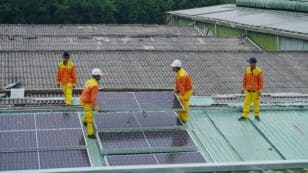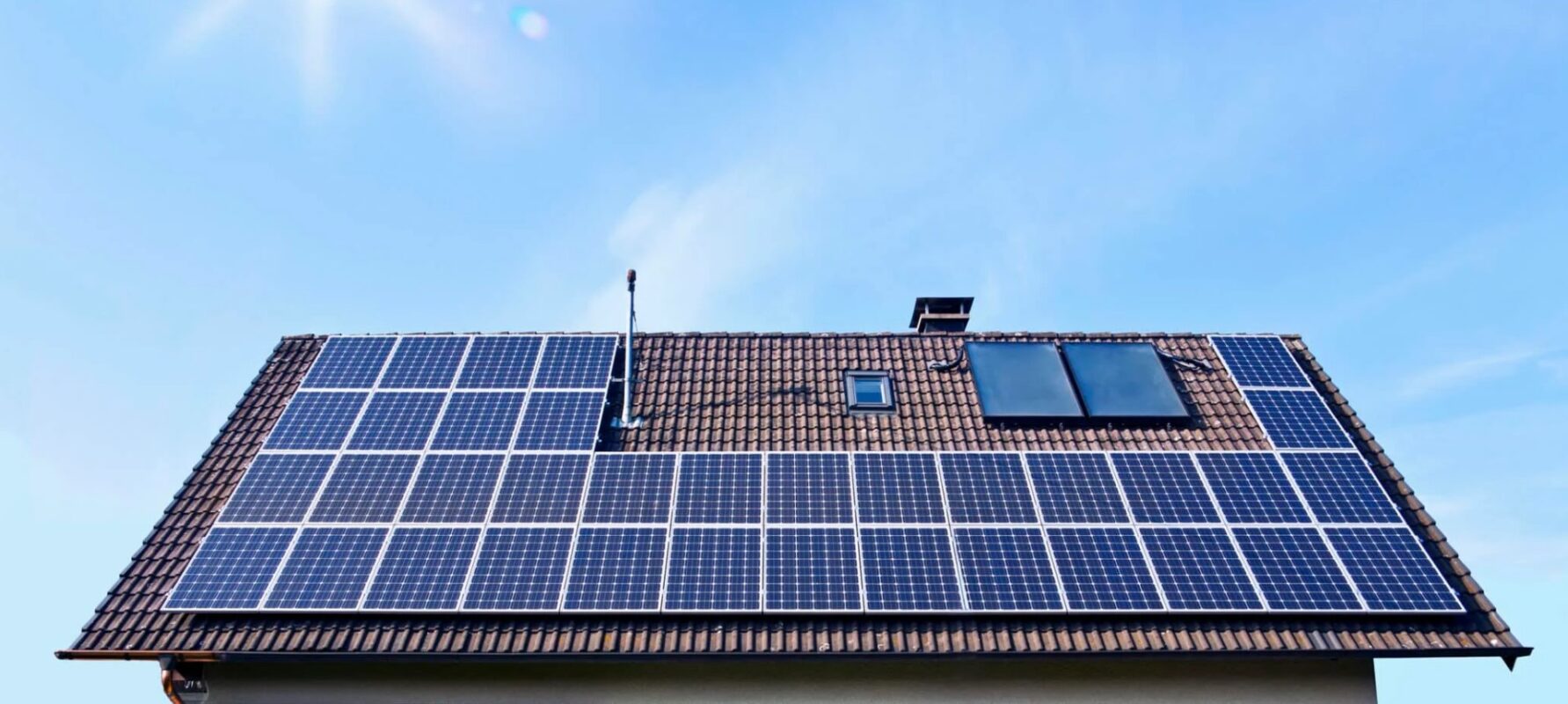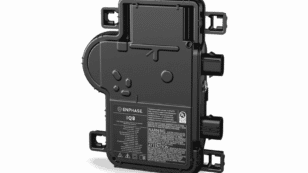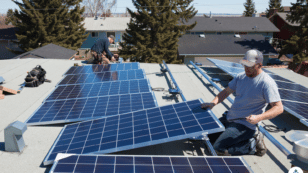

Calculate Your Solar Panel Payback Period (How Long To Recoup the Costs?)
Here’s what we’ll cover in this guide:
- What is the payback period of solar panels?
- Can you recoup all the costs of solar panels?
- How to calculate your solar payback period?
Each product and or company featured here has been independently selected by the writer. You can learn more about our review methodology here. If you make a purchase using the links included, we may earn commission.
What is a Good Payback Period for Solar Panels? + How to Calculate
Solar panel installations are often seen as an investment, so it’s no surprise you are probably wondering when would you see your return of investment (ROI) on going solar. For most homeowners in the U.S., it takes roughly 11 years to break even on a solar panel investment. For example, if your solar installation cost is $16,000 and the system helps you conserve $2,000 annually on energy bills, then your payback period will be around eight years (16,000/2,000 = 8).
To put it a little differently, the solar payback period represents the time it will take for your utility savings to eclipse your initial investment cost. It is at this point that you might say the solar panel system has “paid for itself.”
Keep in mind that there are a number of basic determinants that go into calculating solar payback periods, including installation costs, interest rates if you’re taking out a solar loan, applicable tax credits and solar rebates, and energy bill savings. The latter is always going to be relative to the costs of electricity in your region, so areas that have higher utility costs tend to have slightly shorter payback periods.

SunPower

Nationwide Service
Average cost
Pros
- Most efficient panels on the market
- National coverage
- Cradle to Cradle sustainability certification
- Great warranty coverage
Cons
- Expensive
- Customer service varies by local dealer
SunPower designs and installs industry-leading residential solar and storage solutions across all 50 states. With a storied history of innovation dating back to 1985, no other company on this list can match SunPower’s experience and expertise.
SunPower earns its position as the top national installer on our list for a handful of reasons: It installs the most efficient solar technology on the residential market, offers the most expansive service area and backs its installations with a warranty well above the industry standard. All the while, SunPower pioneers sustainability efforts within the industry.
If that weren’t enough, SunPower systems come packaged with products all manufactured in-house by its sister company, Maxeon. This means that your panels, solar cells, inverters, battery and EV chargers are designed to work together and are all covered under the same warranty.
SunPower’s biggest downside? Its high-efficiency panels are considerably more expensive than most of its competitors’ products. However, its powerful panels are workhorses that make up for the initial cost with more backend production (think about this like spending more money for a car that gets more miles per gallon).
Facts and Figures: SunPower
| EcoWatch Rating |
|---|
| Better Business Bureau (BBB) Rating |
| Year Founded |
| Average Cost ($-$$$$$) |
| Solar Services |
| Brands of Solar Equipment Offered |
| Warranty Coverage |
| 5 |
| A+ |
| 1985 |
| $$$$ |
| Solar Panels, Solar Batteries, EV Chargers, System Monitoring |
| SunPower Panels |
| 25-year all-inclusive warranty |

Blue Raven Solar

Regional Service
Average cost
Pros
- Industry-leading in-house financing
- Competitive pricing
- Excellent reputation
Cons
- Doesn't offer solar batteries (coming 2022)
We like Blue Raven Solar because it understands that, for most homeowners, the cost of solar presents the biggest barrier to entry.
For that reason, Blue Raven Solar developed an innovative solar financing plan that offers in-house, flexible, zero-money-down options. The results speak for themselves, as Blue Raven Solar is now one of the fastest-growing solar companies in the nation and was recently acquired by SunPower. Its BluePower Plus+ plan (exclusive to Blue Raven) mimics the flexible structure of a lease while still providing the greatest benefits of owning your system.
Eligible homeowners enjoy 18 months of solar power before having to pay their first bill. When coupled with the federal solar investment tax credit (ITC), the initial energy savings can offset more than a third of the overall cost of a system before requiring a dollar down.
In contrast, other installers can only offer similar financing through solar leases, PPAs or third-party providers (such as Mosaic or Sunlight). Third-party loan providers can complicate the process, while opting for a loan or PPA will disqualify you from some of solar’s biggest benefits (additional property value, federal solar tax credit and local solar incentives).
Facts and Figures: Blue Raven Solar
| EcoWatch Rating |
|---|
| Better Business Bureau (BBB) Rating |
| Year Founded |
| Average Cost ($-$$$$$) |
| Solar Services |
| Brands of Solar Equipment Offered |
| Warranty Coverage |
| 4.5 |
| A+ |
| 2014 |
| $$ |
| Solar Panels, System Monitoring |
| Trina Solar, Canadian Solar, SolarEdge, Silfab, SunPower |
| 25-year manufacturer warranty; 10-year workmanship warranty, 2-year production guarantee |
Average Solar Panel Payback Period in the U.S.
Though the average solar panel payback period is somewhere in the eight- to 12-year range, this can vary quite a bit from home to home. For some, it may be as little as five years. For others, it may be as long as 15 years. Local electricity costs and state-specific financial incentives, such as tax credits, solar rebates or net metering programs, are determinative factors.
What’s Considered a Good Payback Period for Solar Panels?
One way to determine whether you’re getting a good return on your solar energy investment is to look at the entire lifespan of your system. Most residential solar systems last between 25 and 30 years. If your payback period is 11 years, you’ll be “making money” on the system for 14 to 29 years.
Most solar industry experts say that if your solar panel payback period is less than half the life of your system, it’s a decent investment. Another thing to keep in mind is internal rate of return, or IRR. Basically, think about what would happen if instead of investing in solar power, you placed your money into a more traditional financial investment.
How well would that investment have to perform in order for it to be more financially advantageous than a solar system? Depending on your investment strategies, solar panel installations may or may not offer a higher ROI than purchasing stocks, real estate or other investments. It’s important to weigh IRR carefully to ensure the most prudent decision.
The best way to get an accurate assessment of your solar payback period is to connect with a solar provider near you and request an estimate. Get started below to connect with one of our preferred partners.
How to Calculate Your Solar Payback Period
While it is impossible to calculate your exact solar panel payback period, getting a quote from an installer will allow you to make a fairly accurate, well-informed estimate. Here’s how to do it:
- Calculate or get a quote for your overall total system cost. Talk with a solar installer near you to determine the gross upfront cost of your system. Note that this will be dependent on the size of the system as well as the type of equipment you need and add-ons like solar battery storage.
- Factor in the federal tax credit and any applicable local rebates or credits. These financial incentives can dramatically reduce your solar expenses. In particular, the federal tax credit enables you to deduct 30% of the total installation cost on your tax return. This is above and beyond any state- or city-specific incentives. Don’t forget about solar renewable energy certificates (SRECs) from net metering programs.
- If financing solar panels, factor in any fees or additional associated costs. If you’re taking out a solar loan to pay for your system, you’ll need to account for any other expenses associated with the loan.
- Calculate your average annual electricity consumption and costs to determine the amount you’ll save on energy by switching to solar. Solar installers will do their best to create a system that matches your electrical consumption, but there are a lot of variables to think about, including seasonal shifts. Even so, knowing about how much you spend on electricity each year can give you a decent sense of your potential savings.
- Take into account the rate of increase. In calculating the cost of electricity, remember that local rates may increase over time. You can always call your utility company and ask about any expected increases, or look at bills from past years to determine previous rate increases.
- Divide the cost of the system (including financial incentives) by the annual amount you’ll save on electricity bills. This will tell you roughly how many years it will take for you to recoup your initial investment. Beyond that, every month that you run your solar system can be counted as financial gain.
The best way to get an accurate assessment of your solar payback period is to connect with a solar provider near you and request an estimate. Get started below to connect with one of our preferred partners.
The cost information presented in this article is derived from a comprehensive analysis, incorporating data from multiple industry sources. The average cost per watt per state was calculated based on figures from Consumer Affairs, Energy Sage, and Berkeley Lab’s Electricity Markets & Policy Department. Additionally, monthly energy consumption and the average monthly cost of electricity were sourced from the U.S. Energy Information Administration, ensuring a well-rounded and accurate representation of the information presented.
Frequently Asked Questions: Solar Panel Payback
In the U.S., the payback period for solar panels is about eight years on average, but this can vary quite a bit from one homeowner to the next. In fact, your solar payback period may fall anywhere between five and 15 years.
A well-designed and properly installed solar panel system will usually pay for itself, though it will take several years to reach this point. Beyond the break-even point, every month that you operate your solar system can be considered financial gain.
The federal tax credit will allow you to recoup 30% of your investment right off the bat. Additional savings can be obtained through local and state-level incentives, net metering programs, and savings on your month-to-month electric expenses.
The basic formula for calculating a payback period for solar is to divide the cost of the system, including tax rebates and financial incentives, by the annual amount you’ll save on utility bills. This will give you the number of years required for you to “break even” with your solar panels.
Comparing authorized solar partners
-
- Most efficient panels on the market
- National coverage
- Cradle to Cradle sustainability certification
- Great warranty coverage
- Expensive
- Customer service varies by local dealer
A+Best National Provider1985SunPower Panels25-year all-inclusive warranty
Having trouble deciding? Click below and use our process to receive multiple quotes instead:

 233k
233k  41k
41k  Subscribe
Subscribe 





